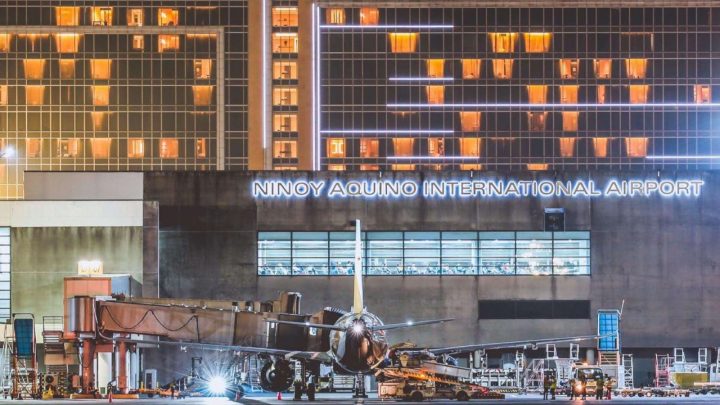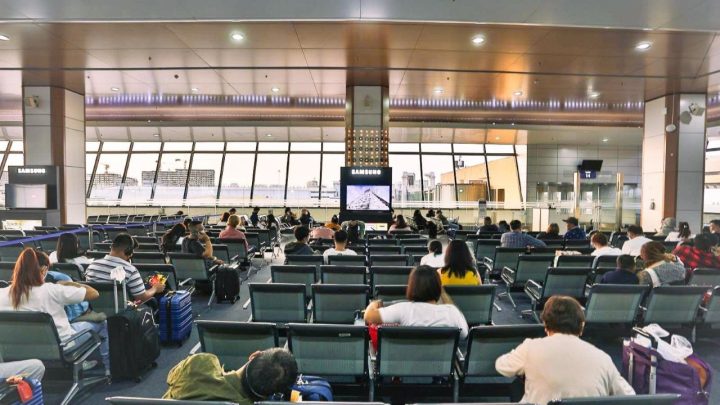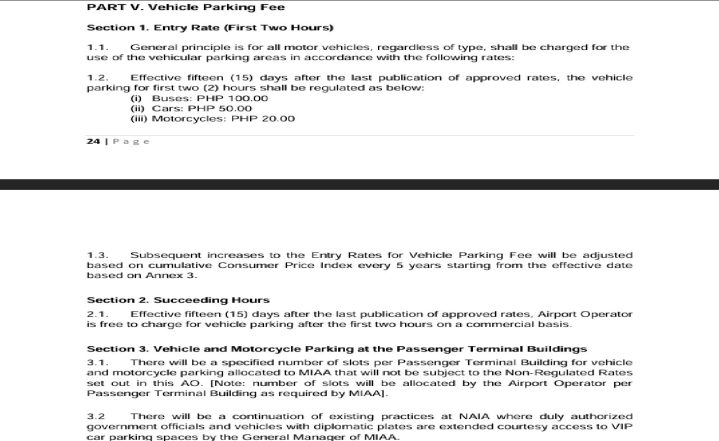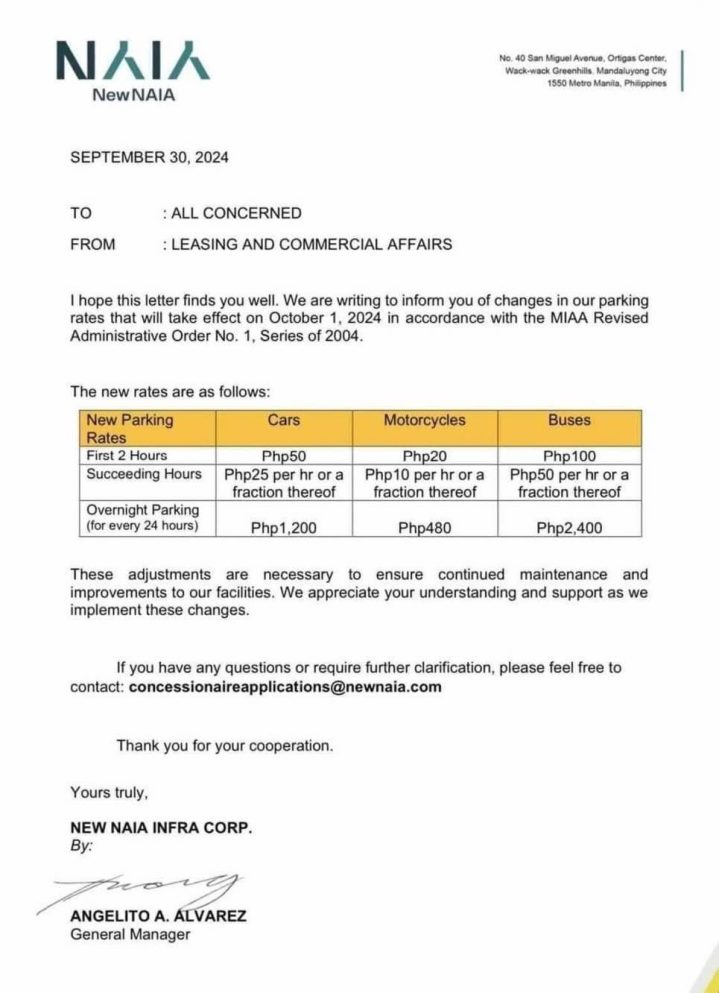
By now we’ve all seen the news that’s been floating around regarding the new NAIA parking rates. Yes, that memo shows a rise in short-term parking rates and a ridiculous increase in long-term, AKA overnight parking. The new airport’s administration called the fact that this is, in fact, the first rate adjustment in over a decade. But what has everyone up in arms (and pitchforks) is why it has to be this radical. What gives?
There’s more than meets the eye with the new NAIA parking fees

Photo: Manila International Airport Authority
We all know that New NAIA Infra Corp. (NNIC) has taken over the reins of the Ninoy Aquino International Airport, better known as NAIA. For a better understanding, NNIC is the consortium that includes San Miguel Corporation (SMC) and Incheon International Airport Corporation. So we’ll go so far as to say that while SMC does have its hands all over the airport, it is not solely under (just) SMC’s will. That said, the takeover was made official on 14 September 2024.
But wait! What people might have missed is the fact that this parking fee hullabaloo came about earlier than the handing of the airport to NNIC. More specifically, this price adjustment was “in line” with MIAA Administrative Order 1 series of 2024 which was subsequently approved through Cabinet Resolution No. 1, series of 2024. The date? September 4, 2024. Its official effectivity date? 15 days after its publication. So, in theory, that would be on September 19, 2024.
Yes, that’s already 5 days after NNIC started management and operations of NAIA, but with this coming to light, the flak that SMC has been getting may be a tad bit harsh. Granted they could do something about it, but it’s not so easy to make your first mandate an outright undoing of the previous “administration’s” last, right?
So why are they running with it?

Before we go further, the Resolution includes many other matters involving operations, fees, and charges. For purposes of this piece that you’re reading, of course we’ll just be touching on the parking fees.
Under the new NAIA management, the “General principle is for all motor vehicles, regardless of type, shall be charged for the use of the vehicular parking areas in accordance with the following rates”, and the vehicle parking for the first two (2) hours shall be regulated as below:
- Cars: PHP 50.00USD 0.85INR 72EUR 0.82CNY 6
- Motorcycles: PHP 20.00USD 0.34INR 29EUR 0.33CNY 2
As it stands, cars will now have to cough up an extra PHP 10USD 0.17INR 14EUR 0.16CNY 1 to park at NAIA which NNIC justifies as “still at par with rates at other commercial establishments”. For every succeeding hour or a fraction thereof, PHP 25USD 0.42INR 36EUR 0.41CNY 3, and PHP 10USD 0.17INR 14EUR 0.16CNY 1 are added to the base rate, respectively. If you think that PHP 10USD 0.17INR 14EUR 0.16CNY 1 added onto the said base rate is something, let’s go back to the dreaded 4-digit overnight rate, shall we?

In a document that seems to have found its way to various outlets – and we’ll just be talking about the ones for motorcycles and cars hereon – it can be seen that cars staying for 24 hours will fork over a hefty PHP 1,200USD 20INR 1,734EUR 20CNY 149 fee and motorcycles will have to pay PHP 480USD 8INR 694EUR 8CNY 60. From what was a PHP 300USD 5INR 434EUR 5CNY 37 rate, overnight parking at NAIA is now 4 times the previous amount.
That’s also because allegedly, “previous parking rates unintentionally encouraged misuse of the airport’s limited parking spaces. Many individuals, including those from nearby establishments and with no airport-related business, were taking advantage of the low rates for overnight or long-term parking. This created parking shortage for actual passengers, adding to congestion and frustration.”
NNIC further defends the upped prices as a means to prioritize passengers, reduce congestion, improve efficiency, and increase space availability for vehicles. But here’s what we can see stemming from all of this (these).
First, we are having a taste of the results (consequences?) of privatization. With a privately owned NAIA, everything that has to do with its policies will be dictated by the powers that be, and aside from government entities who can, should, or will look into their legalities, we can’t really do anything until the law speaks.
Second, while these are aimed at discouraging the improper use of parking facilities of NAIA, it also hits those who do intend to use them properly. We all know that money is pretty difficult to earn, and those who have no other course but to leave their cars at the airport will now have to foot a more expensive bill. Ride-hailing? Oh, we also know that those cost a pretty centavo, and then there’s the case of taxis going all-out predator mode for both locals and more so foreigners.
And we’ll start the third with this quote from NNIC: “The goal is to optimize parking for our passengers. While the previous rates may have been convenient for some, they created significant disadvantages for travelers. We believe these changes will create a more efficient and passenger-friendly airport experience.”
What disadvantages? Is it a lack of parking spaces? Is it crowded lots? Is it the now-real possibility of some vehicles spontaneously combusting and consuming cars upon cars in uncontrollable flames that result in a bevy of insurance claims and calls for airport administration liability and accountability? If we are to be real, the most apparent “disadvantage” that this new NAIA parking rate matrix will bring is the fact that they are just too expensive. Full stop. A 400% increase is unthinkable, and even if plans such as “optimizing existing parking facilities, increasing parking capacity by building new facilities” are in the pipeline, this is undeniably unexpected, and the rate of increase is both unimaginable and unheard of.
And so, the public now awaits how NNIC or SMC – or perhaps even Ramon S. Ang himself – will address the uproar that surrounds what seems to be NAIA‘s first order of business.
Yes, we can hear it now. “If you can afford to travel, you can surely afford parking fees”. Yes, those who say this may very well be right. But get down to the nitty-gritty, the process, the legality, and there is a lot more to talk about. While these things to talk about do include the most apparent which is a rise in parking fees, many more factors from airlines to travelers, and motor vehicle and motorcycle owners, may very well be put in a pinch.
How painful of a pinch that could be or will be is all up to how all of this is cleared by, as we said earlier, the powers that be.


